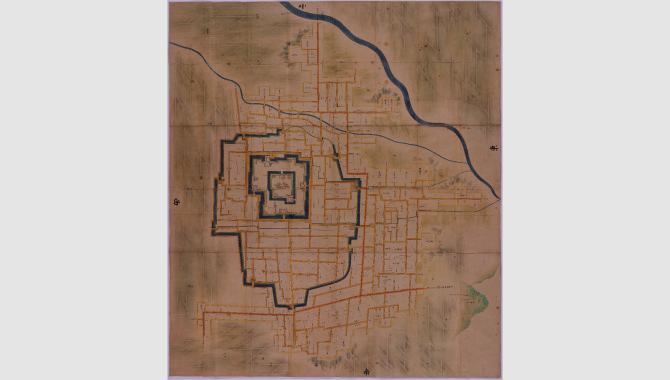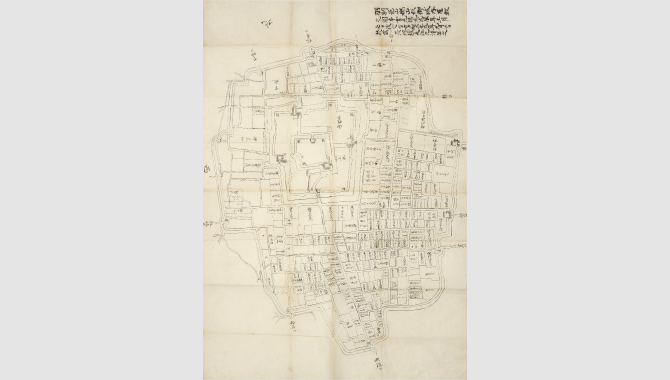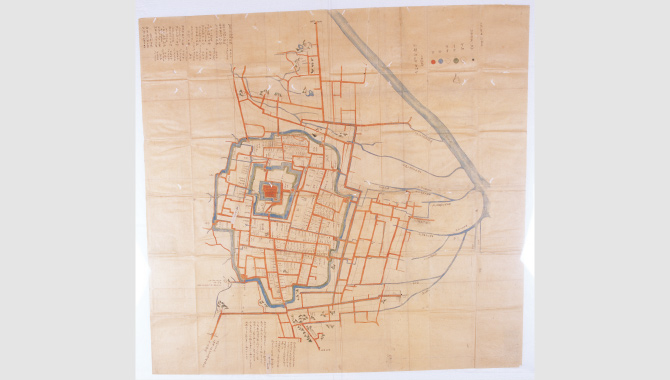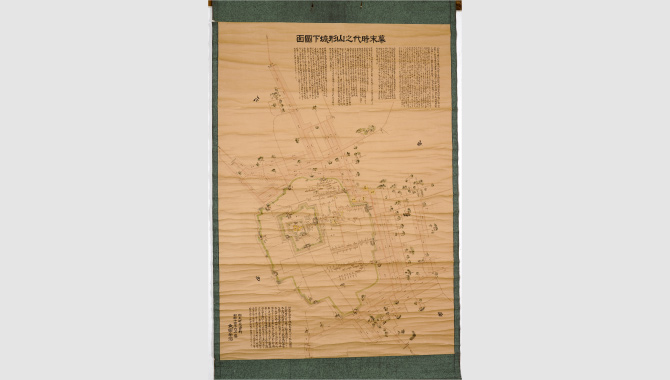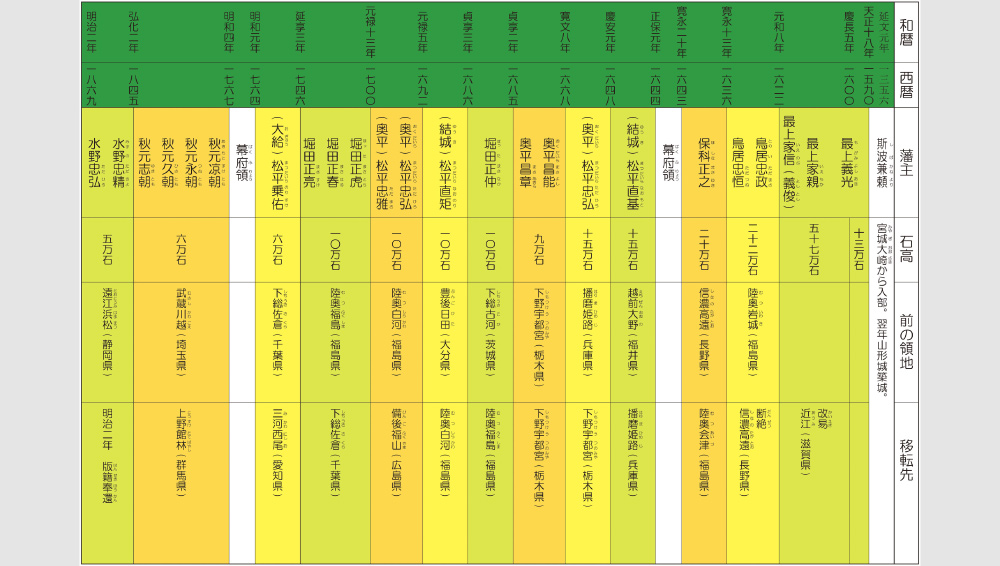Yamagata Castle and the successive lords
The Founder of the Mogami clan, SHIBA Kaneyori
– Family line of the Seiwa Genji –
The time was the period of the Northern and Southern Dynasties. SHIBA Kaneyori, who was descended from the Seiwa Genji clan, the same clan as ASHIKAGA Takauji, as a general of the Northern Court, entered Yamagata as Ushu Tandai (local commissioner in Dewa) in Enbun 1 (1356). Kaneyori decided to make Yamagata his political base, and the following year he began construction of Yamagata Castle. He also established the foundation of Yamagata by unifying the thoughts of the people through religious policies, mainly through the restoration of temples and shrines.
Later, his descendants were given the title of "Mogami Yakata" by the Muromachi Shogunate and began to call themselves the Mogami clan. In Tenbun 15 (1546), about 170 years after Kaneyori, MOGAMI Yoshiaki, the 11th head of the Mogami family, was born as the eldest son of MOGAMI Yoshimori.
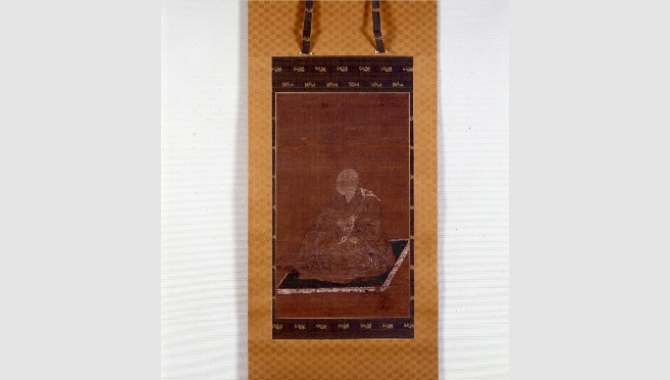
Active role of MOGAMI Yoshiaki
- the Battle of Keicho Dewa, "Sekigahara of the North" -
Yoshiaki excelled in military prowess from an early age, but he faced various difficulties in his youth, including internal conflicts within the Mogami family and feuds with neighboring feudal lords. However, by the end of the 16th century, he had come to rule the Murayama and Mogami areas of present-day Yamagata Prefecture.
In Keicho 5 (1600), Yoshiaki joined the eastern army in the Battle of Sekigahara, the battle that divided the country into the eastern army and western army, and entered the Keicho Dewa Battle, known as the "Sekigahara of the North". UESUGI Kagekatsu, a powerful feudal lord in the western army and one of the five great retainers of the Toyotomi administration, attacked Yamagata with 25,000 troops led by his chief retainer NAOE Kanetsugu, and launched a fierce attack on Hase-do Castle, a branch castle. The battle against Yoshiaki, who defended with every effort, went back and forth at each side for half a month, but NAOE Kanetsugu was informed of the victory of the Tokugawa forces in the eastern army at Sekigahara and retreated. After that, Yoshiaki was granted 570,000 koku by Ieyasu, and established a fief whose value was said to be 1 million koku.
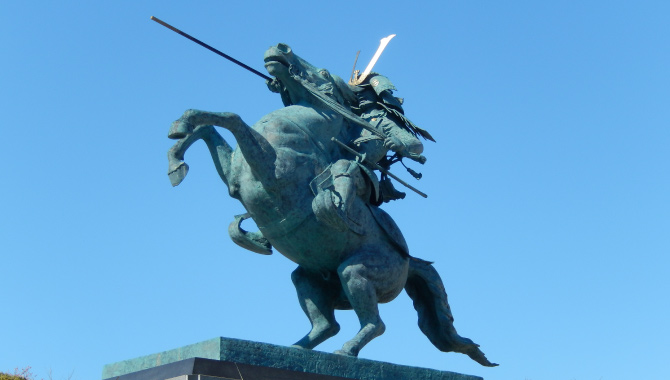
Presented by Yamagata City Tourist Association
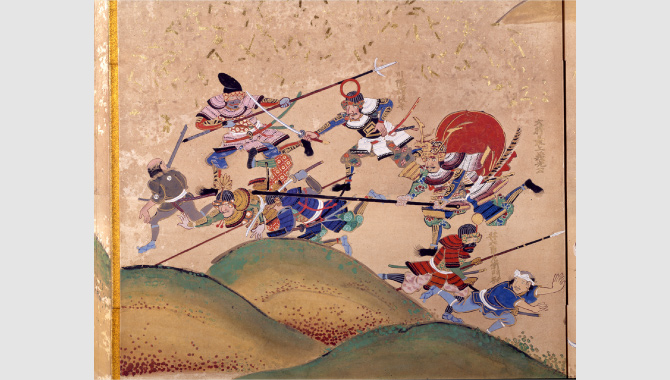
Friendship among Yoshiaki and Military commanders
in the Sengoku Period (Period of Warring States)
He was given the position of "Hashiba Dewa Chamberlain" by TOYOTOMI Hideyoshi, the great ruler of Japan, and was positioned as a powerful daimyo in the Tohoku region. Yoshiaki and TOKUGAWA Ieyasu were three years apart in age, so they became abnormally fast and close friends. Yoshiaki gave Ieyasu gifts such as falcons and famous horses, which Ieyasu was very pleased with.
Yoshiaki and his neighboring rival, DATE Masamune, had a relationship as uncle and nephew through his beloved sister, Yoshihime. As in the Osaki Battle of Tensho 14 (1586), they fought each other as enemies, and sometimes developed an intense hair-trigger crisis behind closed doors with a strain relation. However, while in Nagoya, Kyushu, in Tensho 20 (1592), on the orders of TOYOTOMI Hideyoshi for dispatching the troops to Korea, they put their past conflicts behind them and worked with each other. During the Keicho Dewa Battle, Yoshiaki rebuilt his position with the help of Masamune.
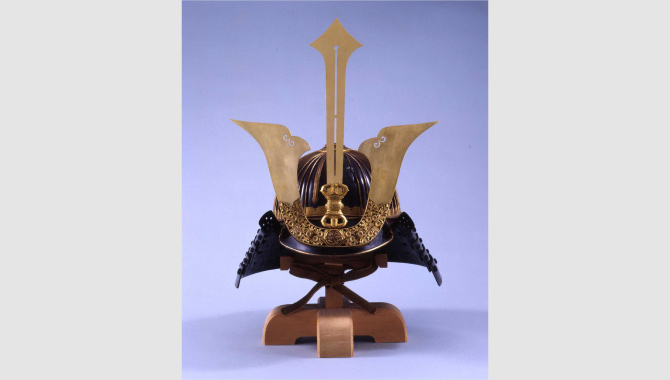
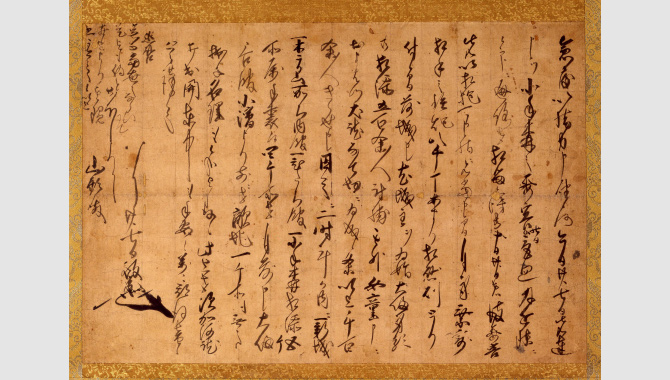
Castle Town Development by MOGAMI Yoshiaki who became the first lord of Yamagata Domain
The castle town of Yamagata is at a higher elevation than the Yamagata Castle. It is said that this was done in order to take advantage of the fan-shaped terrain of the Mamigasaki-gawa River, to enrich the town's wells and fields with spring water, and to utilize the low marshy ground as a strategic point for defense.
Yoshiaki, who became the first lord of the Yamagata Domain, greatly promoted commerce, and merchants came and went along Ushu-Kaido road, which started Uwa-machi in the south and went to Itsuka-machi to Youka-machi, Toka-machi, Yoko-machi, Nanuka-machi, Hatago-machi, Muika-machi, and Yokka-machi street, and Miya-machi in the north. In addition, Zaimoku-machi, Gin-machi, Rosoku-machi, Nushi-machi, Himono-machi, Oke-machi, and Kaji-machi were established as artisan towns, contributing to the development of the town as a commercial city.
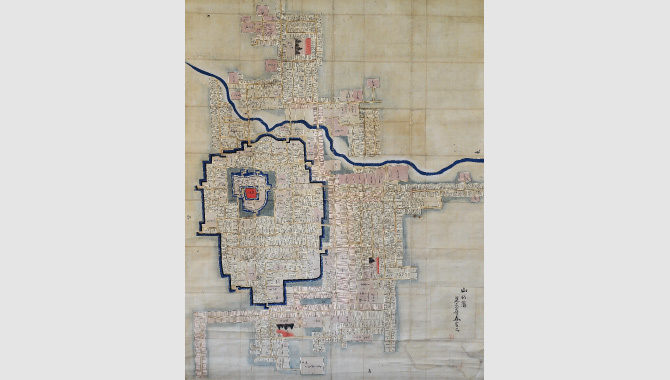
The successive castle lords after the Mogami clan
Following the Mogami feud happened after the death of Yoshiaki, the Mogami clan was deprived of their fief in Genna 8th (1622), and Torii Tadamasa started to rule Yamagata Domain. Tadamasa carried out a large scale repair of Yamagata Castle to build the basis of the current figure, as well as replacement and land survey of the temples and massive construction to change the Mamigasaki-gawa River flow that had drifted around current Bunsho-kan Hall.
As the Torii clan was not blessed with an heir, HOSHINA Masayuki, son of the second shogun TOKUGAWA Hidetada, took power in Yamagata. During his seven-year reign, Masayuki worked feverishly to develop the city, and was called a great sovereign for his efforts in land surveying, development of distribution networks, and helping the people suffering from the floods and bad harvests caused by the collapse of the Mamigasaki-gawa River.
After Masayuki was transferred to Aizu, the Matsudaira clan, the Hotta clan, the Akimoto clan, and the Mizuno clan, who were all Fudai daimyo (hereditary feudal lord), became the lords of the castle.
Yamagata Domain, which once boasted 570,000 koku of the Mogami family, was reduced to 50,000 koku by the end of the Tokugawa shogunate, and maintaining the large Yamagata Castle was the focus of the successive lords.
